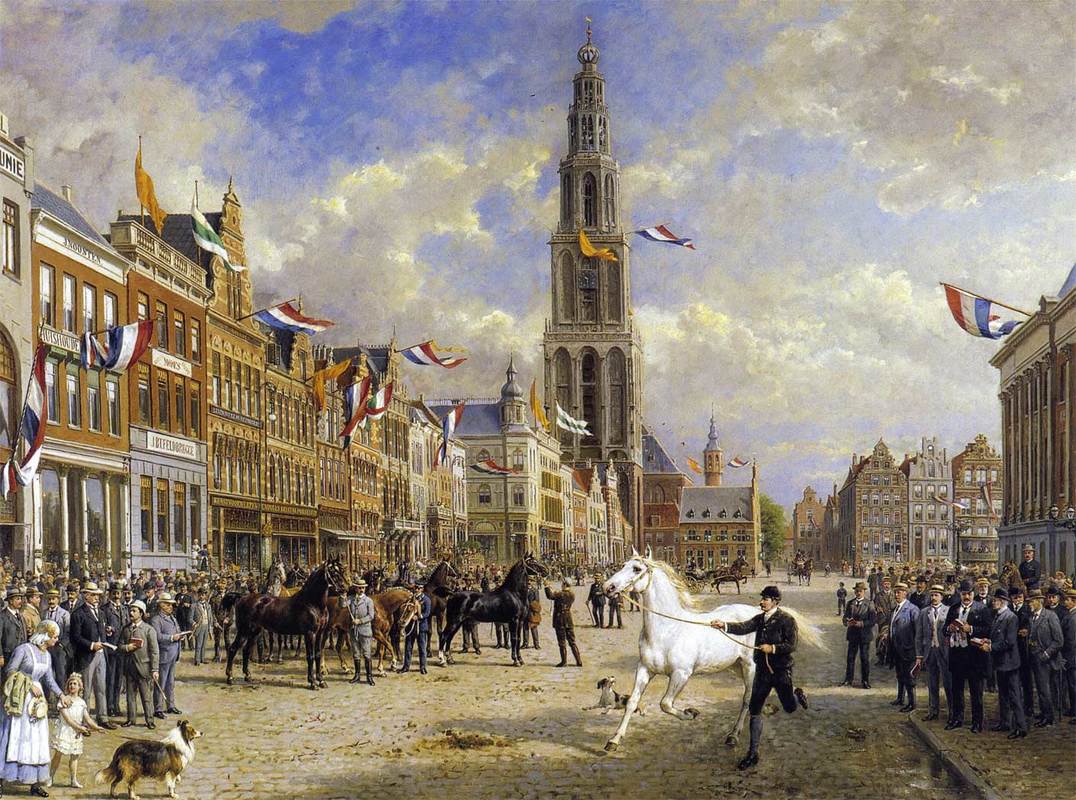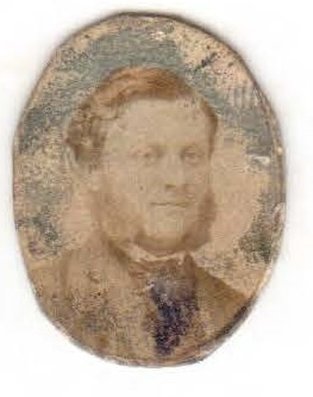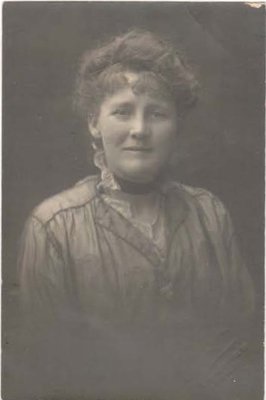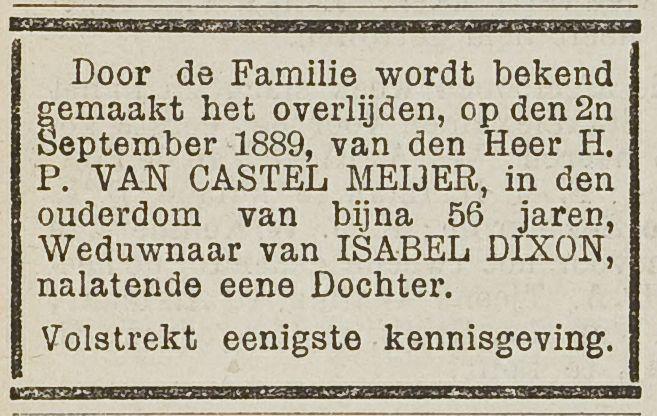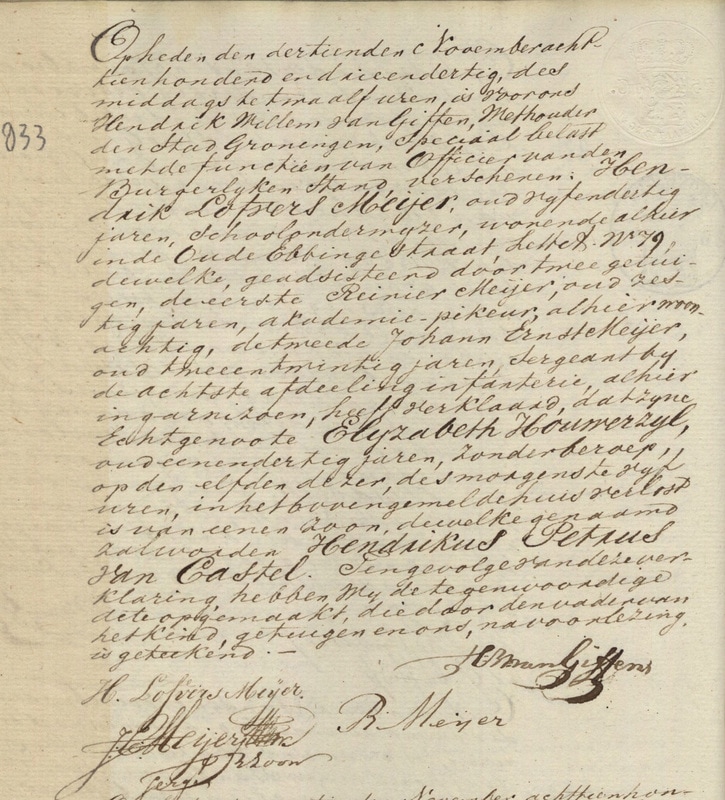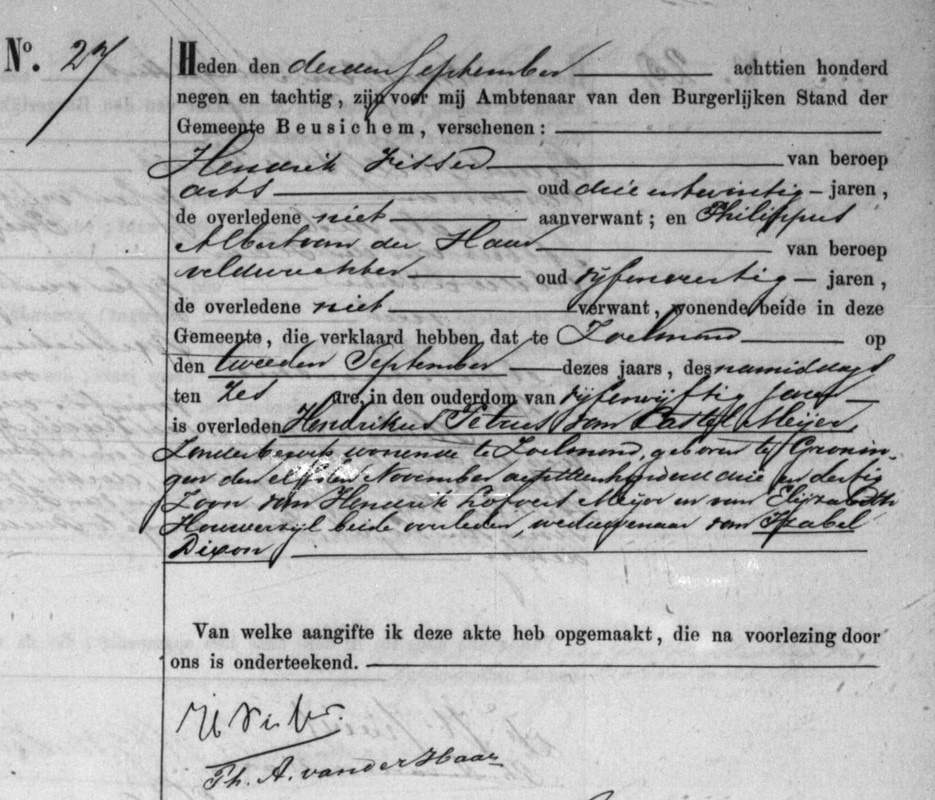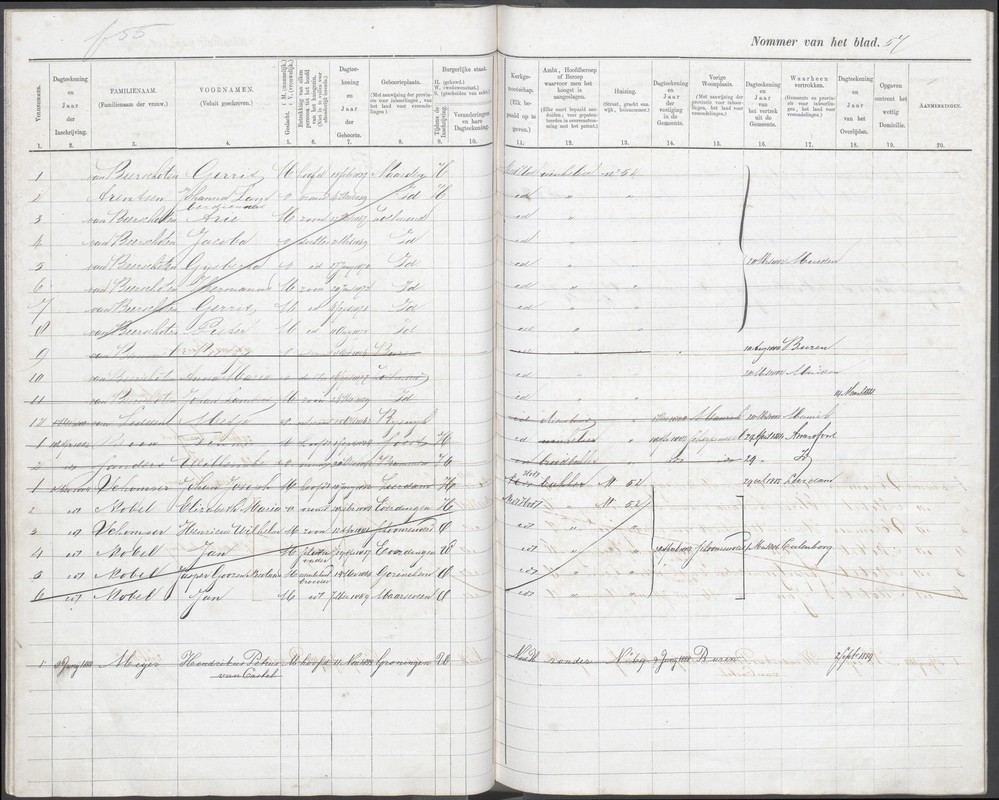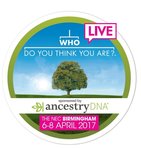|
Whilst writing last month’s blog and trying to second guess the regional distribution of my own DNA in the UK, currently under analysis with Living DNA, my thoughts turned to the branch that is most definitely not British in origin at all. When viewed as a diagrammatical tree, this branch is much closer to the trunk than some of the others I have written about in the past. Yet, there they sit rather forlornly and somewhat neglected as nothing more than a fairly extensive list of names. I know, or understand very little about them as 'people' or their place in history. These families hailed predominantly from Groningen, a medieval city built on Roman foundations in the North Eastern region of the Netherlands. ‘As an old city Groningen was the regional power of the northern Netherlands, a semi-independent city-state and member of the German Hanseatic League’. It lies close to the German border, so close infact that a bus to Bremen costs as little as 7.50 Euros. Ironically the city is twinned with Newcastle upon Tyne, and today is most famous for its university, founded in 1614. I have touched on this family before in my blog The Dixons and a Dutchman in which I likened my 2 x Great Grandfather Hendrikus Petrus van Castel Meijer, (HPvCM) to the Dickens character, Mr Micawber. In the 1871 census Hendrikus was listed simply as Henry Meyer, a Ships Provision Merchant living at 79 Manor Road, Deptford, with his wife Isabel and their only child, a daughter called Grace Elizabeth or “Tissie”. From this point, for a period approaching 20 years, they all simply disappear. I am living testimony that this family was not abducted by aliens, even though on occasion it seems the only logical explanation! The next confirmed sighting I had of Henry came from his death record in Beusichem, Buren, Gelderland, Netherlands in Sep 1889, where is reported as having ‘no occupation’. This was closely followed by Tissie’s marriage to John Davison of Alnwick in December of the same year, where his occupation recorded as a ‘labourer’. An eclectic mix of monogrammed silver cutlery has survived to potentially bear witness to this family’s more affluent times. This is not quite as ‘daft’ as it may sound. Items such as these were highly portable commodities that could easily be sold or pawned. The majority of the cutlery that remains appears to be part of a monogrammed canteen. It is electro plated nickel silver or (EPNS). Some of the pieces are hallmarked R M J & Co. S. A. R M J & Co refers to the manufacturer ‘Robinson M. Johnson & Company’ active at Shoreham Plate Works, Shoreham St, Sheffield (hence the ‘S’) from 1876-1881. The ‘A’ refers the grade or quantity of silver in each piece. ‘A = Standard Quality = 24 grams on 12 pieces = 2 grams per table spoon or table fork’. Henry & Isabella were married in 1865, so the above dating process would preclude the cutlery from being a wedding present. Equally, as there are also oddities of a lesser grade ‘B’ bearing exactly the same monograms, but with the markers mark J R & S for John Round & Son of Birmingham, perhaps the set was rather ‘bodged’ together, and already second hand at the time it was engraved for purpose? A few solid silver pieces remain including Tissie’s christening spoon and fork, which bear the marks of ‘Henry Holland’ of London and the date Letter ‘M’ for 1867, the year after Tissie’s birth. (She was born on Christmas Day 25th December 1866). However, this blog is not about the history of silver but suffice it to say, the evidence surrounding this little collection of innocuous objects does offer some insight into the family, and would indicate they were still in England in the mid to late 1870’s if not the 1880’s. So where were they? The 1881 census repeatedly draws a blank every time I look at it. Not helped I might add, by the fact the family had anglicised their surname from Meijer to Meyer, making it rather more akin to searching for ‘John Smith’. A possible sighting in the 1881 census matches Henry’s brother, Reinier, more closely in occupation and age than it does Henry himself. The problem here is that the Christian name recorded is ‘Heindrich‘ and he is married, which so far as is known, Reinier was not! Of Isabella and Tissie there is no sign whatsoever. By the time of his death and his daughter’s marriage shortly afterwards, Henry seems to have found himself in rather reduced circumstances, evidenced by Tissie’s marriage certificate. Yet, someone placed the marriage notice in the newspaper using his full name Hendrikus Petrus can Castel Meyer, of London, but who? Determined to get the bottom of these mysteries and being unable to read Dutch it was time to bring in the experts! I passed the case to Dutch genealogist John Boeren of ‘Antecedentia’ to see what he could unearth in the records there. The first piece of information that came back was that the informants of Henry’s death in 1889, (aged 57), were a doctor and a police constable. Highly suspicious of the potential implications this presented - John checked the newspapers – nothing, apart from an announcement in the Rotterdam press. This once again raises questions as to who placed the advert and more crucially who paid for it! Announcements such as these were not common practice, and Beusichem, where Henry died, is not in the Rotterdam area. Did Henry have relatives living there? The record does at least tell us that Isabel had predeceased him, (where and when to date remains unknown), and that he had one daughter. But where was she? Here, dear reader, I shall hand over to John, who will talk you through the format of the Dutch records, what is available and crucially how, and what further information he discovered about Henry: Genealogy in the Netherlands Once you find out you have ancestors from the Netherlands, you might think: “oh no, is this my next brick wall?” But let me assure you: there are so many Dutch resources available, and you can find a lot of information on the internet. Most genealogical databases focus on BMD records, population registers and church books. That is no surprise, since these sources are the first ones you want to study! They provide tons of useful information. But as always, there are a few things to keep in mind when browsing all the digital images. BMDLet me first tell you something about BMD records. The Dutch term for civil registration is burgerlijke stand. Most genealogists in the Netherlands will tell you that the burgerlijke stand was used since 1811, when the country was part of the French empire. That statement is true for most of the country. However, some parts in the south of the provinces of Limburg and Zeeland came earlier under French influence. In these regions, you can find birth, marriage and death records from 1796 on. In all other provinces civil registration was introduced from 1811 on. Records of the burgerlijke stand are important, because under Dutch law these records proof certain facts. A birth record for example proofs the date and place of the birth, the name of the child and its relationship with the parents. This does not – unfortunately – imply that all the information in a birth, marriage or death record is always correct! You can find many mistakes in these records, especially in the records from the first decades of this new system. You should always look for other sources to corroborate the information. Civil records like this are still in use today. Due to privacy regulations, you can only access BMD records that are older than 50 years (death), 75 years (marriage) or 100 years (birth). You might be scared of the Dutch language. Try not to be. Once you have seen a couple of civil records, you will see a pattern. Each document has more or less the same structure, the same elements. Especially the printed forms are quite easy to read and understand. A birth record is called geboorteakte, a marriage record is a huwelijksakte and a death records is an overlijdensakte. Do you know in what place your ancestor was born, got married or died? The best you can do is to find the local or regional archives. See if they have a website with a genealogical database and start your quest. If you do not know where exactly to look for your ancestors, you might try the ‘national’ database of WieWasWie. The database does not contain all records, but gives you a good idea where to start your search. It has an English interface: https://www.wiewaswie.nl/en/home/ The case of HPvCM I could find the birth record of Hendrikus Petrus van Castel Meijer on the website from the archives in Groningen (click here). The record tells me that he was born in Groningen on 11 November 1833 as a son of Hendrik Lofvers Meijer and Elijzabeth Houwerzijl. Through this record I also learned his father was a school teacher who lived at the address of Oude Ebbingestraat 79. This street still exists, so technically Susie could go there and visit the location where her great-great-grandfather was born! I was also able to find his overlijdensakte, registered in Beusichem on 3 September 1889. The death record states he died on 2 September 1889 in Zoelmond (a small village within the municipality of Beusichem), aged 55. It says he had no occupation and that he was a widower of Isabella Dixon. The record also mentions his parents. Population registers Besides the BMD records you should really use the population registers (bevolkingsregister). The information in the burgerlijke stand focuses on specific events, whereas the population registers show you where a person lived for a longer period. These registers start – in most places – in 1850 and are available until 1920. From 1920 until 1939 the same kind of information was registered on family cards (gezinskaarten). Both systems are public and if you are lucky, you might find images of them online. If you take a look at a page of a bevolkingsregister you might think that they look quite similar to a UK census form. There is one very important difference between a census and a Dutch population register. A census records all information, as it is at that exact moment. A bevolkingsregister records all information, as it was during a period of time. Sometimes these registers were used for ten or even twenty years. Within this period, all changes were recorded. So you can see what happened to the whole family in a glance: children were born, parents died, children left their parental house for marriage or to live in another city. If you ‘follow’ the person from register to register, you know exactly what happened to him or her and where she or he lived. Not all Dutch population registers are online (yet). I was very lucky to find Hendrikus Petrus van Castel Meijer in the bevolkingsregisters of the municipalities of Buren and Beusichem. The Buren register shows very clearly that he left London and moved to Asch, a small village close to Buren, at the end of March or beginning of April 1887. He lived with the local school teacher’s family. One year later – after the death of the school teacher - he moved to Beusichem, where he lived with the school teacher’s widow and her children in the small village of Zoelmond. The Beusichem population register shows that he died on 2 September 1889. The exact same date as I found in his death record. I now know where he spent the last two years of his life. But I still have a lot of questions… For that I need further research, either in the UK or in the Netherlands! Looks like Susie & I will be working together on this case for some time yet. **ENDS**How Henry died and why it necessitated the presence of a constable remains unresolved, furthermore it does not help in the search for Tissie. Was she in Holland, as there is no trace of her in the UK. With John’s help I hope to set about about tracking her closest Dutch relatives, her cousins in Groningen. This was the family of Maragretha Magdalena Meijer, Henry’s sister, and second wife to Arend Martens Prins, a merchant there. The old grey matter remembered this family being mentioned and that there was a London connection. Was Tissie possibly living with them? A probate record for Margaretha Prins proved at London in 1895 would indicate the family had at least some interest there. What was it and more to the point where was Tissie? As this blog is being written, so the basis of another is forming as John goes in search of the Prins family. Merchants they may have been, but their main cargo appears to have been people! Join us soon for the next instalment and another foray into European history. ConclusionAs an endnote to this piece, which I think perfectly illustrates Living DNA’s motto ‘We are all made up of all of us’, is something I stumbled upon whilst researching this article. One of the daughter’s of Arend and Margaretha Prins - Reiniera Margaretha Arendina Prins appears in a family tree on GENI. This lady was my 1st cousin 3 times removed in my paternal line. However, GENI has also found a link back to my mother! “Reiniera Margaretha Arendina Prins is your 7th great aunt's niece's husband's first cousin thrice removed's wife's sister's husband's granddaughter's husband's mother.” Work that one out if you can! In case you missed it last month, and want to join me on my ancestral journey – the competition to win a free DNA test from Living DNA is still open! http://www.bordersancestry.co.uk/dna-competition.htm John Boeren 'Antecedentia'John Boeren is a genealogist, researcher and writer, who lives in Tilburg, in the Netherlands. He offers genealogical research in the Netherlands, heritage trips, lectures and courses. His genealogy business is called Antecedentia (http://antecedentia.com). Link to website: http://antecedentia.com Link to facebook page: https://www.facebook.com/antecedentiaresearch/ John will be attending the WDYTYA event in Birmingham NEC 6-8th April, where you can meet him in the 'ask the experts' section of the show. If you haven't already bought your tickets you can save £20 on a pair, when you book through #AncestryHour.
2 Comments
26/2/2017 09:36:50 pm
Fascinating insight into your Dutch ancestry plus the wealth of information available. Thank you for sharing it with us.
Reply
Susie Douglas
27/2/2017 12:26:11 pm
It can be frustrating when you know who your ancestors are but cant always find the blighters!
Reply
Leave a Reply. |
AuthorSusie Douglas Archives
August 2022
Categories |
Copyright © 2013 Borders Ancestry
Borders Ancestry is registered with the Information Commissioner's Office No ZA226102 https://ico.org.uk. Read our Privacy Policy
